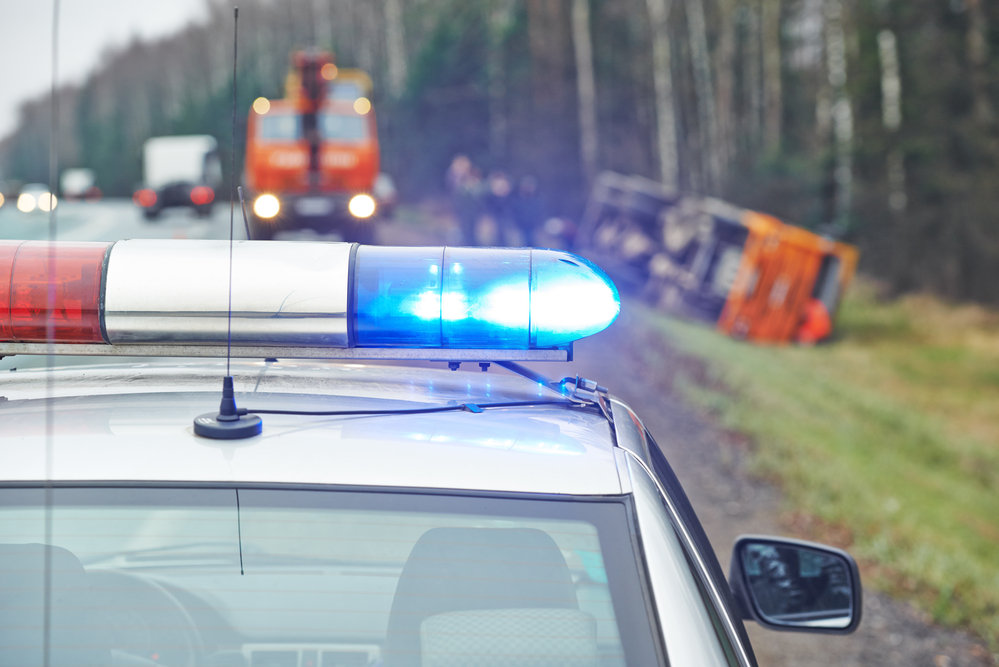As a hazmat driver, it’s extremely important to prioritize safety while on the road. There are many reasons as to why a hazmat truck accident is more dangerous than other kinds of truck accidents. Rollover accidents that involve hazardous materials could potentially harm the driver, the public, and the environment due to the toxic substances and products being spilled on the road or released into the air. In this blog, we’ll discuss why rollovers happen and what you can do to prevent them.
Why do Rollovers Happen
It’s a common misconception to think that most rollovers happen on entrance and exit ramps by taking the curve too fast and losing control. However, most rollovers happen on straight roadways, like a highway or interstate. This may be because drivers are more focused on what’s to come, like an entrance or exit ramp, rather than where they are at. In reality, rollovers can happen anywhere.
According to the Federal Motor Carrier Safety Administration, 78% of truck rollovers are caused by a driver’s error. In most cases, drivers could have completely prevented their accident if they had slowed down and paid more attention. Here are some of the top risk factors, from the FMCSA, that could potentially lead to rollover:
- Vehicle Design – Tank trucks have a high center of gravity that is relative to their width. Because of this, they’re less stable. When turning, the trucks will lean to one side. Depending on how fast and how sharp you make the turn will determine how far it leans. The key is to not turn too fast or too sharp.
- Load Effects – Many drivers involved in rollovers will tell you that their load shifted, which is especially true for liquid transportation drivers. As we mentioned, trucks will lean into their turn, but when it’s liquid, it will slosh to one side or back and forth. Additionally, if a truck slams on its brakes, the liquid will surge forward, which makes it hard to stop. Either way, it can cause the trailer to lose its balance and tip over.
- Highway Factors – Many highway factors could lead to unsafe highways, like sharp curves, steep grades, soft shoulders, narrow roads, and limited visibility areas. Taking a turn too sharp, going downhill too fast, and drifting off the road can all lead to unfavorable situations.
- Driver Factors – A safe journey begins with you, the driver. Not knowing how to handle your truck and trailer, being unaware of your surroundings, getting distracted, and participating in unhealthy habits can result in an accident. It’s up to you to avoid unsafe behaviors and to encourage others to do the same.
How to Prevent A Rollover
- Slow Down – Many rollover accidents happen because of sudden movements — suddenly hit the brakes, suddenly turn the wheel, etc. This means, slowing down can mitigate many of these problems. Managing and adjusting your speed for the driving conditions is the best thing you can do.
- Be Aware of Your Load – It’s important to be aware of your load distribution. Your trailer will maneuver differently depending on how full or how empty your trailer is. You must keep that level in mind and how it impacts your ability to maneuver.
- Do a Pre-Trip Inspection – Before hitting the road, a pre-trip inspection may be all that it takes to prevent a rollover. It’s crucial to catch mechanical issues before getting behind the wheel. Drivers should inspect their whole truck and trailer, but some likely contributing factors to rollovers are poor brake performance, suspension damage, and low tire pressure. Don’t get on the road if you’re not confident that your truck will perform safely.
- Be Prepared – Drivers should prepare for their drive by surveying their routes to identify and avoid potentially dangerous road conditions. All in all, drivers should proceed cautiously in these high-risk zones. If a driver feels uneasy about certain road conditions, report it. It could be your call that prevents future rollovers from happening.
- Practice Safe Driving Habits – A driver must commit to not participating in unsafe driving behaviors. Drivers should slow down, eliminate distractions, don’t be complacent, get enough rest, and develop healthy habits.
Drive Safe
Rollover accidents can be quite severe, especially when there are hazardous materials involved. There’s no one reason as to why a rollover happens, but it could be because of the vehicle design, load effects, highway factors, and driver factors. Fortunately, there are many ways to prevent rollover crashes and they all start with you.
Safe driving is a key factor at Liquid Trucking. Our qualified team takes pride in providing the safest and highest quality liquid transportation service out of the Midwest. We are a leading hauler of food, agricultural, and hazmat liquid materials. If you’re looking for an experienced and trustworthy hauler, please give us a call at 844-GO-TANKS.
